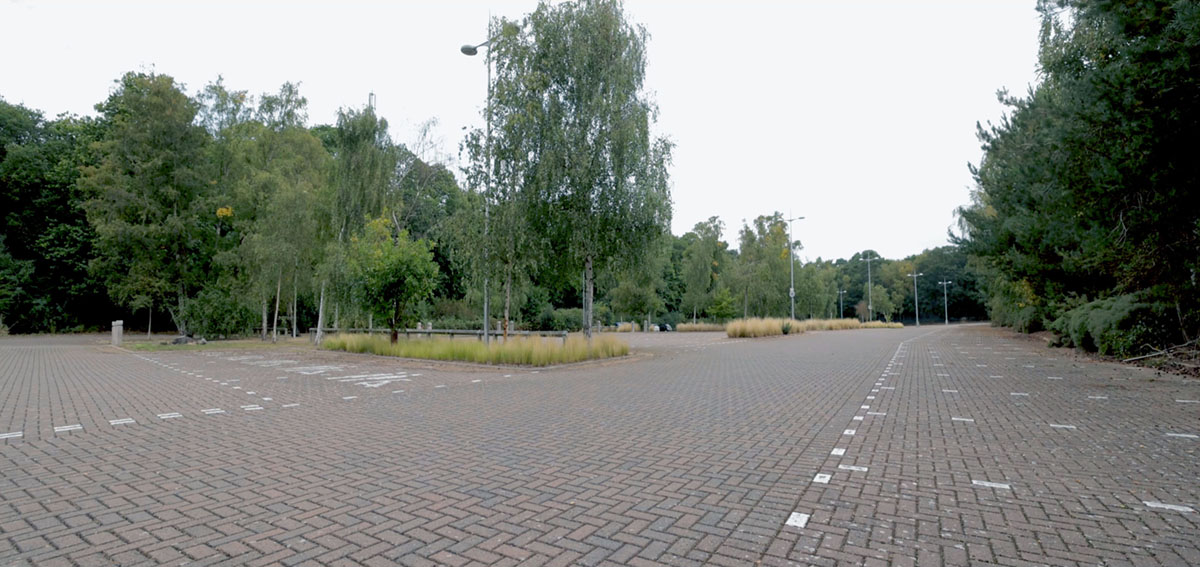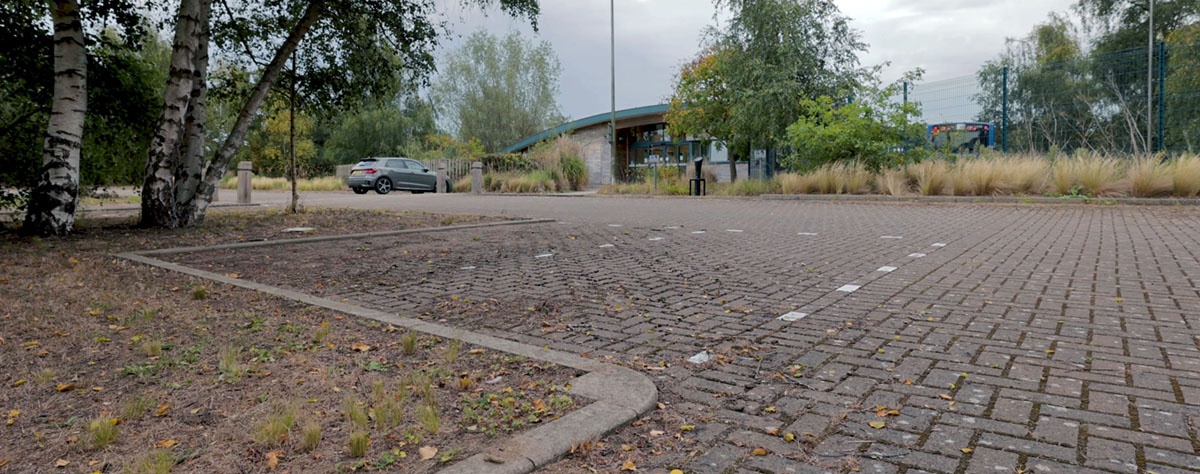Permeable Paving for Trees

A video interview with the original designer of Martlesham Park and Ride, Suffolk – one of the projects involved in the recent trials discussed in our Latest Post – reveals major benefits of concrete block permeable paving (CBPP) for trees and other green infrastructure.
Constructed in 2003, this large out-of-town car park receives regular daily trafficking from commuters and shoppers. With around 500 car spaces, the 13,000 m2 of concrete block permeable paving has delivered problem-free performance over 17 years.
Extensive mature trees around and within the site were simply retained as part of the scheme. The CBPP removes pollutants from water passing through, providing sustenance for trees. The roots have continued to grow within the permeable pavement sub-base but – importantly – there have been no visible signs of block rutting or lifting, or roots coming through the surface.
The grit-filled joints do have moss in them but, as a porous substance itself, water passes through without issues. The site is surrounded by vegetation, with some tall trees and well-established shrubs. Maintenance has effectively been cosmetic – occasionally sweeping tree debris and vegetation from the surface after storms and leaf fall in the autumn.
As CBPP allows the same pattern of run-off transfer to the ground as natural vegetation, it allows water to reach tree and shrub roots, despite providing a hard surface above. This is endorsed by the current Code of Practice for accessibility in the external environment, BS 8300-1:2018, which states that: ‘Tree grilles should be avoided. Smooth or paved permeable surfaces should be used wherever practicable’.
Concrete block permeable paving technology will, in future, play a key role in retaining and introducing trees, and other green infrastructure, within our towns and cities.
In addition to new permeable pavements for developments, CBPP overlays to existing, conventional road bases can be used in conjunction with raingardens or bioretention areas to store water for irrigation while improving the public realm.
View case study video here. An Interpave case study on the Martlesham project is available here.

